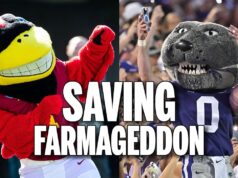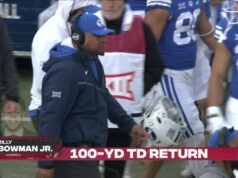
Schools have always been a flashpoint for society’s cultural disagreements, but rhetoric in Oklahoma has recently grown heated. The combination of a financial crisis, two presidents eager to reduce inequality and a growing urban-rural divide have added fissures to long-standing trends and stretched budgets during the past two decades.
Overall, the deficiencies in our state’s education system can be classified either as structural or as evidence of a gap between resources for urban and rural school districts.
An outdated structure
Overall, the current structure of public education was designed at a time when Americans lived mostly rural lifestyles. High-quality teaching candidates were plentiful due to discrimination against women in other fields of work. Now, educators feel embattled because teacher quality has declined (though it may not be as bad as many people say).
On salaries, Democratic and Republican majorities in Oklahoma’s legislature have maintained the average teacher wage at roughly 80 percent of the national wage for generations. There hasn’t been a raise recently because very few states have handed out raises while recovering from the 2008 financial crisis. Recent Oklahoma Watch data reveal that urban and suburban districts often pay 5 percent to 15 percent above the state-mandated minimum salary, while rural districts pay very close to the minimum.
In addition, under a one-teacher-per-classroom model, the system suffers when faced with vacancies. The pressure to retain full staffing levels adds a lot of stress to the system even if vacancies are low compared to the rest of the economy. A rural superintendent could cut football or other extra-curricular activities for teacher raises or to pay the bills, but that superintendent would probably be run out of town on a rail.
A bump in general education funding would go a long way toward maintaining competitiveness with city schools and avoiding district consolidation, but that would mean raising taxes or cutting other services. The overall balance would be less beneficial for cities that already subsidize rural regions by paying slightly more property taxes per capita and have more schooling options available.
The rural-urban gap
Larger urban and suburban districts have an advantage of scale over rural districts. Scale creates savings in everything from buses and superintendent supervision to sports complexes. Still, urban schools have their own challenges. In particular, dismal voter turnout in school board elections represents a key structural deficiency. For example, the election for Oklahoma City Public Schools chairperson, which covers all districts, received 3,381 votes in 2013. Meanwhile, OKCPS has about 5,000 employees.
Low voter turnout relative to the number of employees in the system means that employees with a vested financial interest could theoretically muster enough votes to pick their bosses. The employees that live in their district are likely voting in high numbers due to strong incentives and union organization. In that light, it may seem unsurprising that OKCPS leadership turnover has been high, and a Wild West discipline policy existed that kept “problem” kids out of classrooms and schools. Without federal mandates and lawsuits, this district, with a $500 million budget, would essentially be captured by unions while parents (and students) exert little power. New superintendent Rob Neu has provided the first sign of positive momentum in a generation, but it is unclear how long his tenure will be or whether the reforms he has pursued will survive past him.
Further, in urban schools, testing results and graduation rates are significantly worse than suburban and rural districts. Our nation’s last two presidents have tried to combat low test scores and falling graduation rates through heavy-handed federal programs like No Child Left Behind and Race to the Top. They introduce such federal mandates to provide oversight that the community lacks.
The conflicts between rural and urban schools will continue to be flamed by the fight over next year’s state budget. With a billion dollar projected shortfall, it will be hard for common ed to emerge unscathed. It will require a rethink in the way we educate our kids to prevent this cultural battle from escalating.





















